Spring is the season of new beginnings. People start a new job, new school, etc. It’s sad to leave a place where you have lived for a long time and moreover sad to live far away from close friends. Friends are special because no matter where we live, we are always connected.
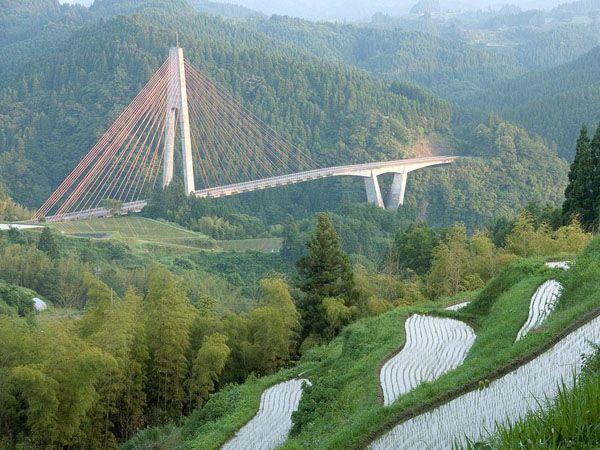
Source : https://kumamoto.guide/spots/detail/11823
Today, I am going to introduce you a beautiful Ayu-no-se Ohashi bridge (鮎の瀬大橋) in Yamato Town (山都町). My best friend Tanima has left Kumamoto last month. Before leaving Kumamoto, we had a trip to Gokase Town (五ヶ瀬町) in Miyazaki Prefecture. On the way to Gokase Town, we dropped by at this bridge and it was much better than we expected!
Let’s get to know about Ayu-no-se Ohashi bridge and I hope you will visit there sometime soon!
Contents
- 1 Ayu-no-se Ohashi Bridge (鮎の瀬大橋) in Yamato Town
Ayu-no-se Ohashi Bridge (鮎の瀬大橋) in Yamato Town
About Ayu-no-se Ohashi Bridge (鮎の瀬大橋) ~ A new legacy in stone culture ~
When it comes to Yamato Town, people think of stone bridges. The most famous one is Tsujunkyo Bridge (通潤橋).
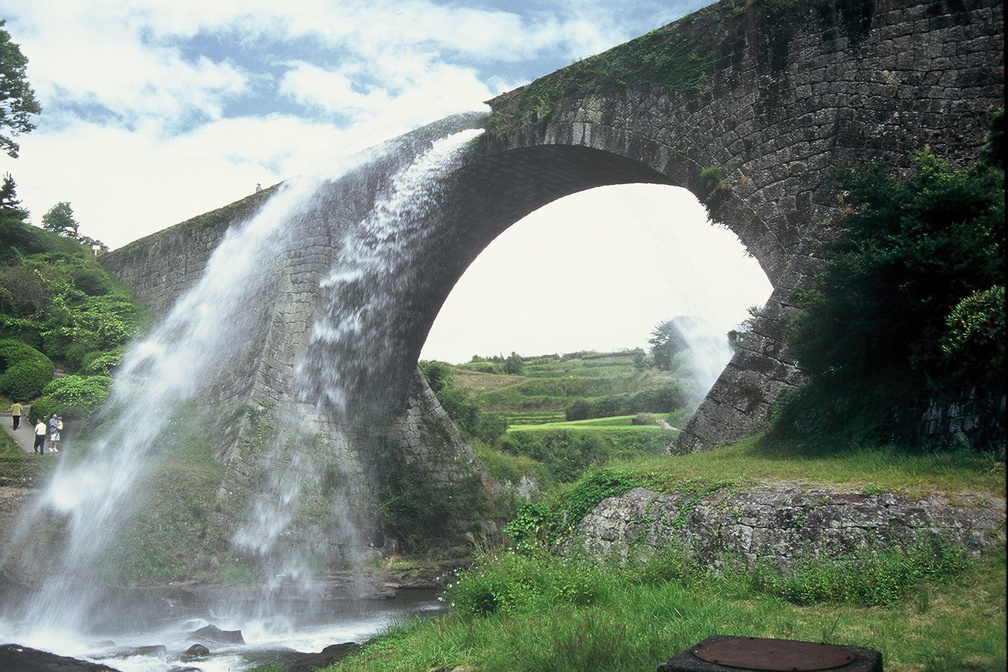
Source : https://kumamoto.photo/archives/
The area is a deep valley with many waterfalls. It was very difficult to go to the other side of area beyond the river.
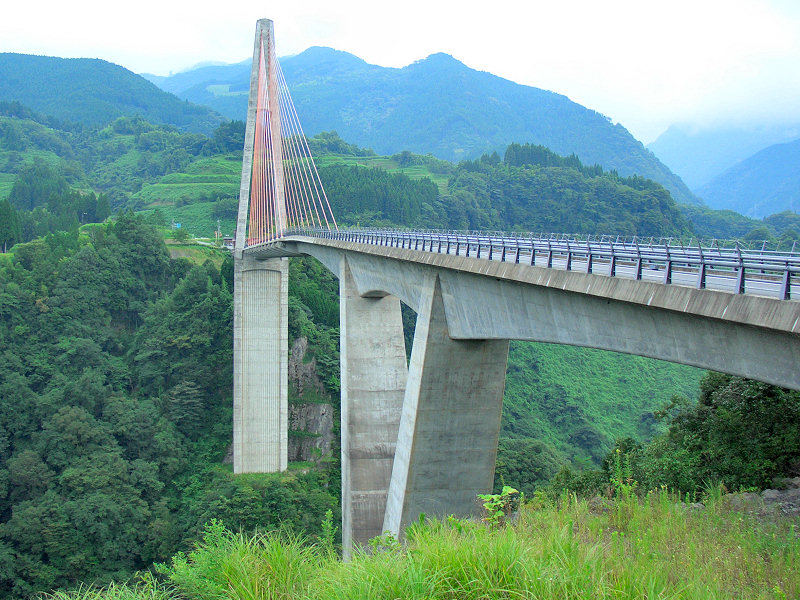
Source : Wikipedia
Now, we have a modern bridge to present Yamato Town. This is Ayu-no-se Ohashi Bridge (鮎の瀬大橋). It is a part of an agricultural road which is about 5.7 km overall.
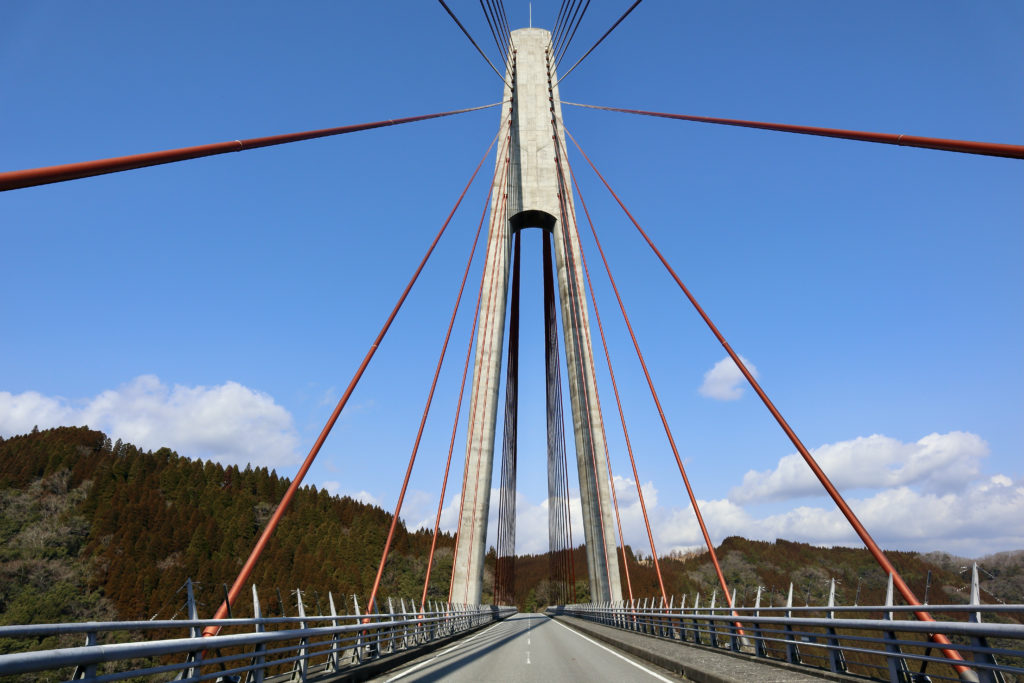
This bridge is across Midorikawa River (緑川) . The length of Ayu-no-se Ohashi Bridge is 390m and it took about 5 and a half years for its completion. The construction of the bridge didn’t go easy at all. It is a deep valley and I heard that bridge piers were built in the middle of the cliff so it was a very hard construction. In the first place, it took about a year just to prepare for building a bridge.
The architect is Miyoko Oono (大野美代子) who has built bridges across Japan and being awarded many architectural prizes.

Ayu-no-se Ohashi Bridge consists of 2 parts, cable-stayed bridge and V-shaped bridge pier. I don’t know anything about architecture so I may not be able to explain well but I heard that this unique structure suits asymmetry geographical feature. On one side, you can see the view of mountain ranges. On the other side, you can see the deep valley.
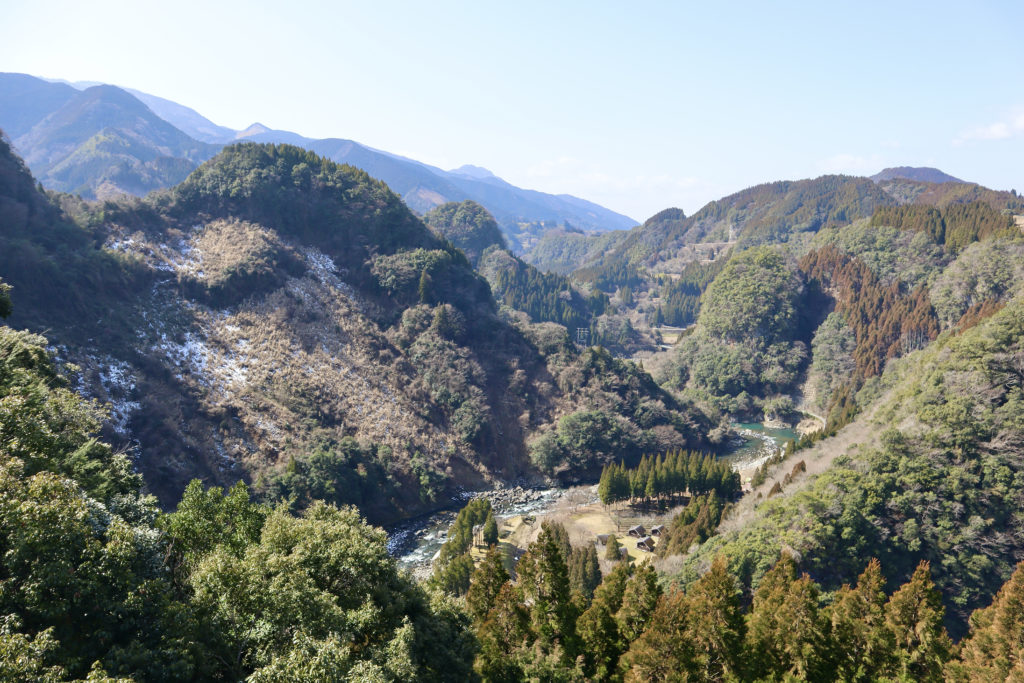
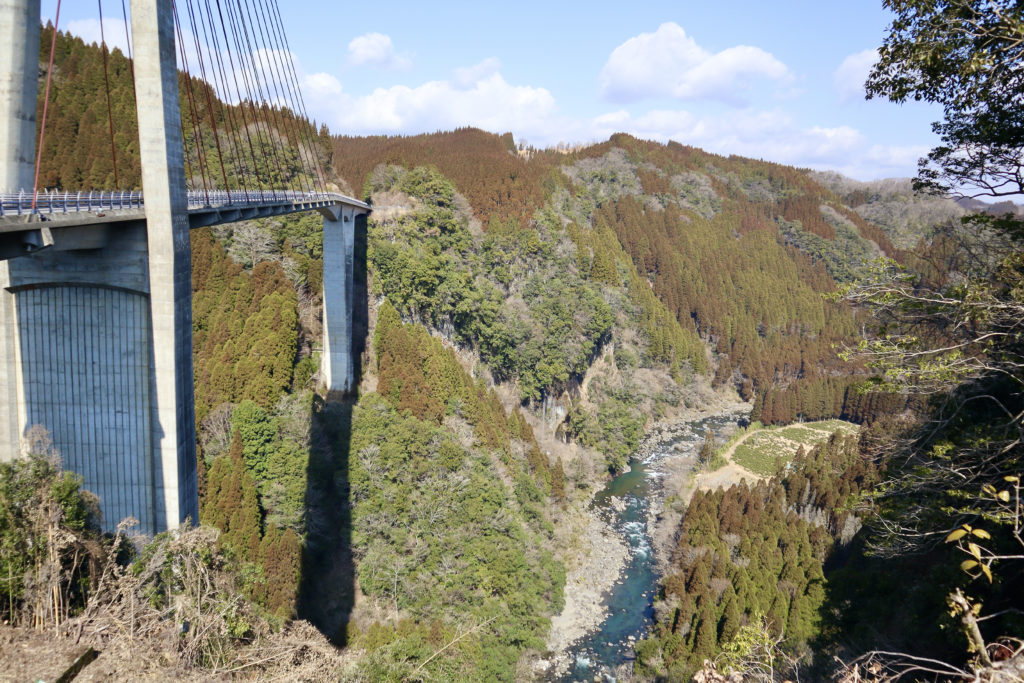
For the mountain view, Oono designed the cable-stayed bridge and on the valley side, she set V-shaped bridge pier so that both the structure and scenery harmonize.
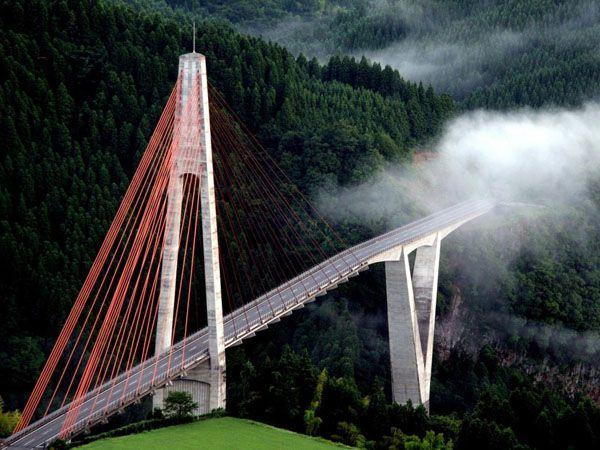
If you find this bridge without knowing anything about it, you may get surprised at first to see a large modern architecture suddenly appears in front of you. But soon, you will see it nicely harmonized which both nature and the bridge create.
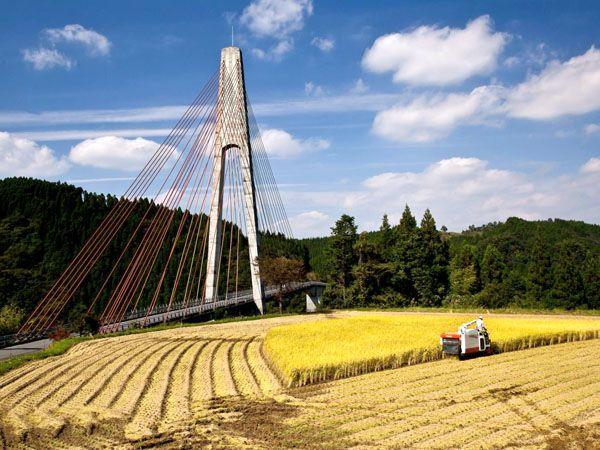
One of the works of Kumamoto Artpolis (くまもとアートポリス)
Ayu-no-se Ohashi Bridge is one of the projects of Kumamoto Artpolis. So, what is “Kumamoto Artpolis”? Kumamoto Artpolis is a project by Kumamoto Prefecture aiming at passing on good architectures to the next generations. It started in 1988.
Like other cities around the world, people have built similar concrete buildings through the process of modernization. We are now living in the time seeking for not just material wealth but also mental wealth. Because of this trend, buildings are now required to be attractively designed not just practical.
All around Kumamoto, there are amazing architectures by this project, like schools, stations, halls, police stations, public lavatories, bridges, etc.
For example, I have introduced one of the works of Kumamoto Artpolis which is Yokomachi pocket park (横町ポケットパーク) in Kikuchi City (菊池市). It’s a foot bath and stands in residential area.
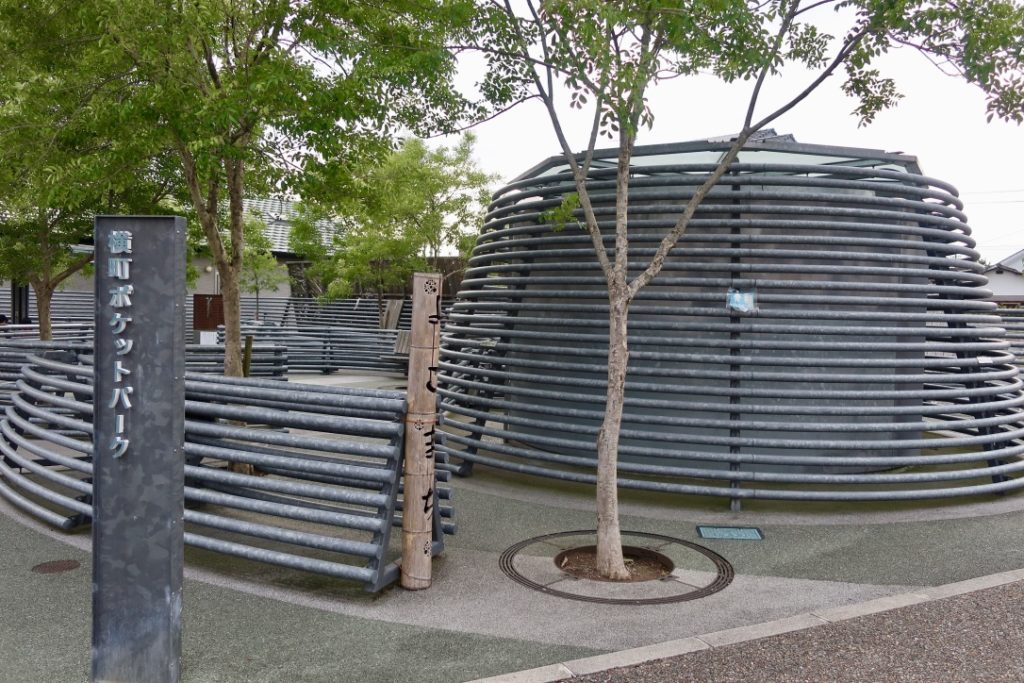
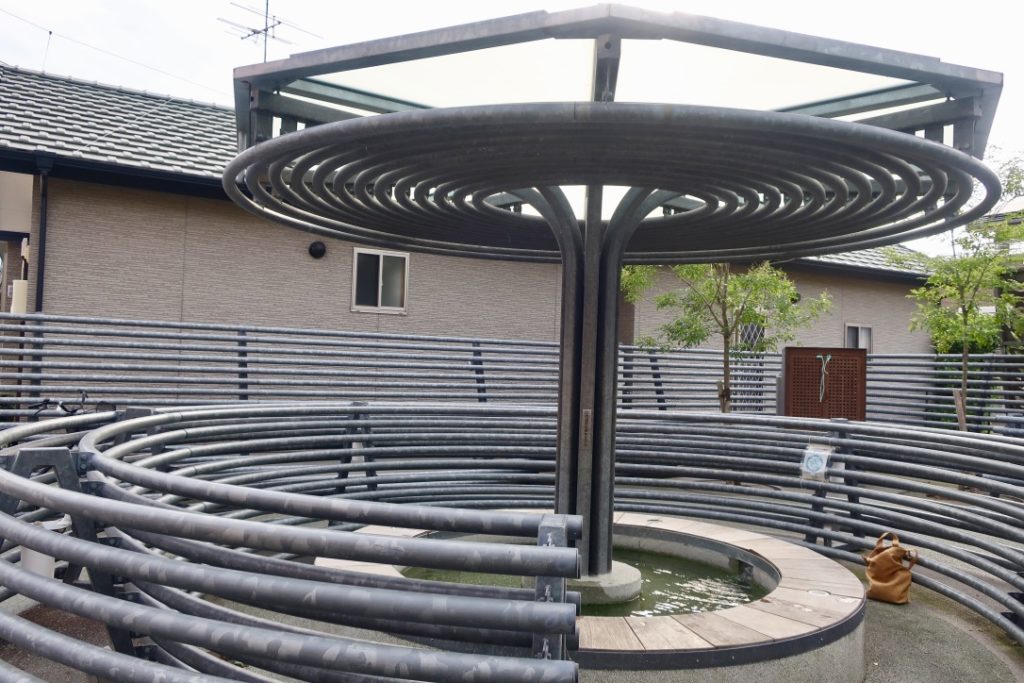
It was built in 2012 purposing to provide a place for locals and tourists to interact with each other. When you have an opportunity to go to Kikuchi City, visit this foot bath and hopefully you can interact with locals there!
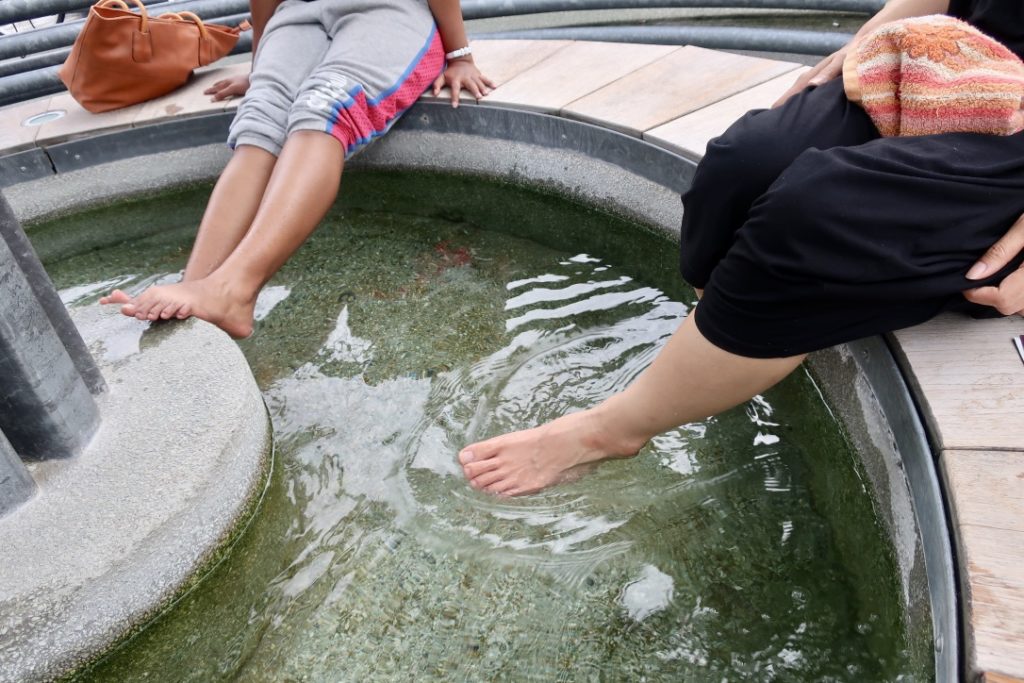
⬇️ Check the article below and get to know about the foot bath!
Map of Yokomachi pocket park (横町ポケットパーク) in Kikuchi City (菊池市)
⬇️ This is the list of Kumamoto Artpolis (unfortunately, they don’t have English page.). Check it out and I hope you will visit some of them.
https://www.pref.kumamoto.jp/soshiki/115/83273.html
What else can we visit near Ayu-no-se Ohashi Bridge in Yamato Town?
Tsujunkyo Bridge (通潤橋) in Yamato Town
Tsujunkyo bridge is the symbol of Yamato town and the way it discharges water from the top is dynamic. Originally, it was not for the performance. The initial purpose was to wash away the waste in the stone tubes but because of the powerful shooting, it became the symbol of Tsujunkyo bridge and Yamato town.
About two years ago, I read a novel about stonemasons in Kumamoto and fell in love with their great works of stone bridges. People risked their lives building stone bridges, hoping to make their lives better for the future. Tsujunkyo bridge is blood, sweat and tears of people in the past.
After the 2016 earthquakes, they stopped discharging water because of the damages of stone tubes (the amazing thing is that Tsujunkyo bridge itself was not damaged at all.). This year, Yamato Town has announced that they will restart discharging water from April 3rd. Duration of discharging water is almost 15 minutes and they have it once or twice a day.
Here is the 2021 calendar for discharging water at Tsujunkyo bridge (通潤橋) in Yamato Town (山都町).
https://www.town.kumamoto-yamato.lg.jp/kanko/kiji0036590/3_6590_5584_up_dxa5hpwr.pdf
I wrote about Tsujunkyo and other stone bridges and the story of stonemasons in Kumamoto. Check them before visiting Tsujunkyo and I hope you will think of the people who involved in the work and have a great time in Yamato Town!
Gorogataki Waterfall (五老ヶ滝) in Yamato Town
Gorogataki waterfall stands close to Tsujunkyo bridge. In Edo period, Narishige Hosokawa (細川斉茲), who was the eighth lord of Hosokawa family, visited Yamato Town for shooting and dropped by at the waterfall. He was impressed by Gorogataki waterfall and ordered an exclusive painter of the family, Yoshikatsu Yano (矢野良勝) to sketch the waterfall. Hosokawa was overwhelmed by his work. He asked Yano to find other scenic spots in Kumamoto and sketch them. Yano edited all the drawings and completed “領内名勝図巻(hand scroll of scenic beauties in Kumamoto)”.
At Gorogataki waterfall, there are plenty of welded tuff from the eruption of Mt. Aso. Welded tuff is strong but easy to process. You can see the welded tuff from the suspended bridge near the waterfall.
Check the article below and get to know more about Gorogataki waterfall and the relationship with Tsujunkyo bridge!
Gorogataki Waterfall (五老ケ滝) in Yamato Town (山都町)
Visit Ayu-no-se Ohashi Bridge (鮎の瀬大橋)!
Bridges have always helped us have a better life. They are also the symbol connection of people. If we can build a strong relationship with someone, there is always a bridge which connects us no matter where we live.
I hope this Ayu-no-se Ohashi will be one of your favorite bridges and remember someone very special for you.
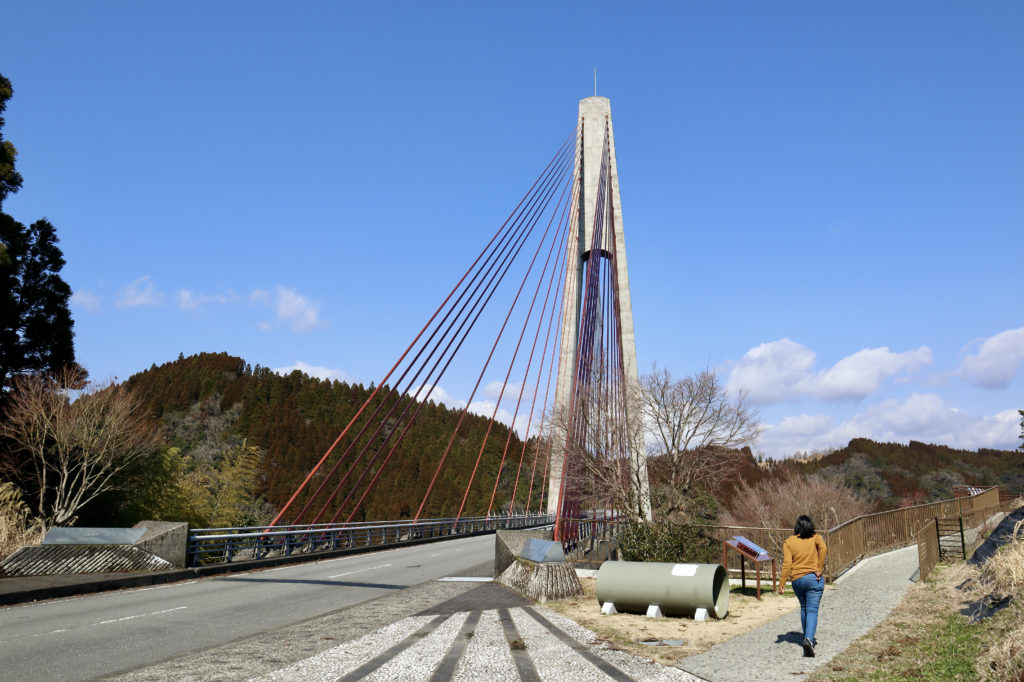
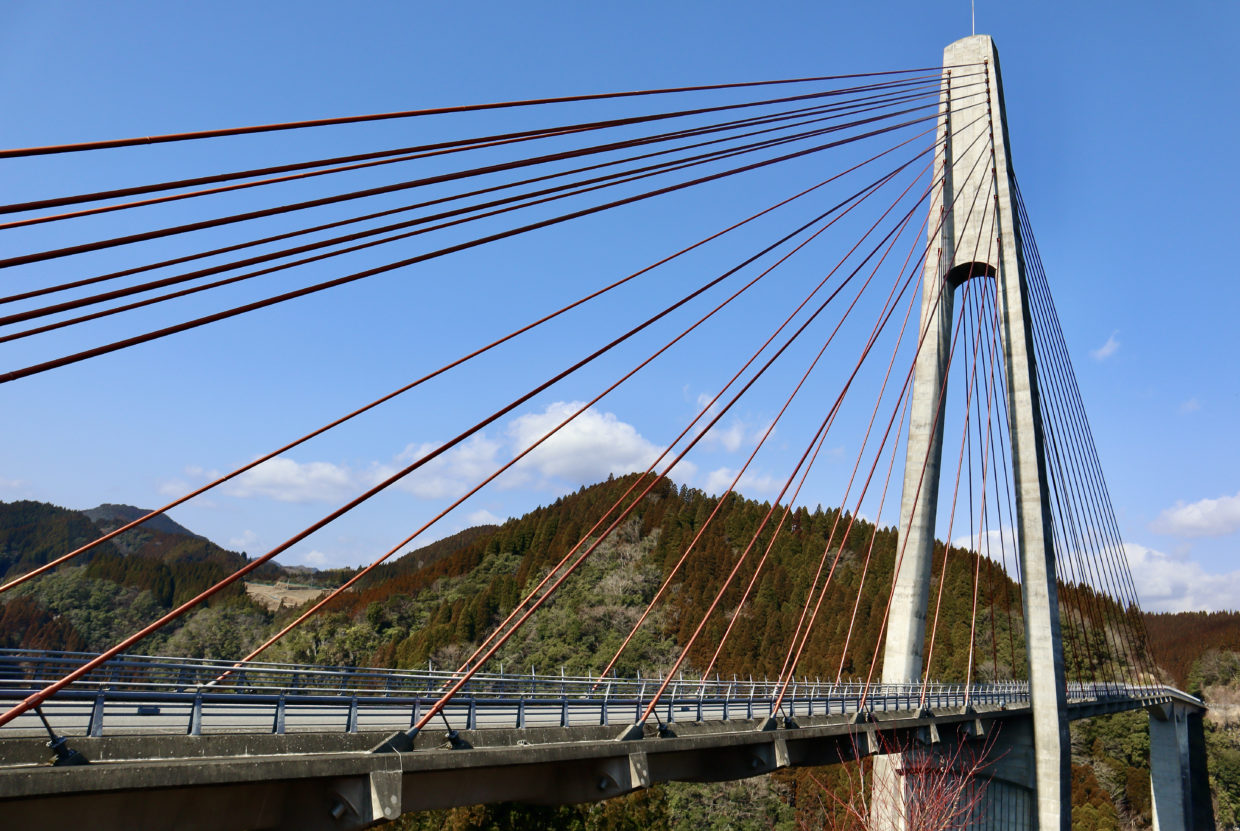
1 ピンバック